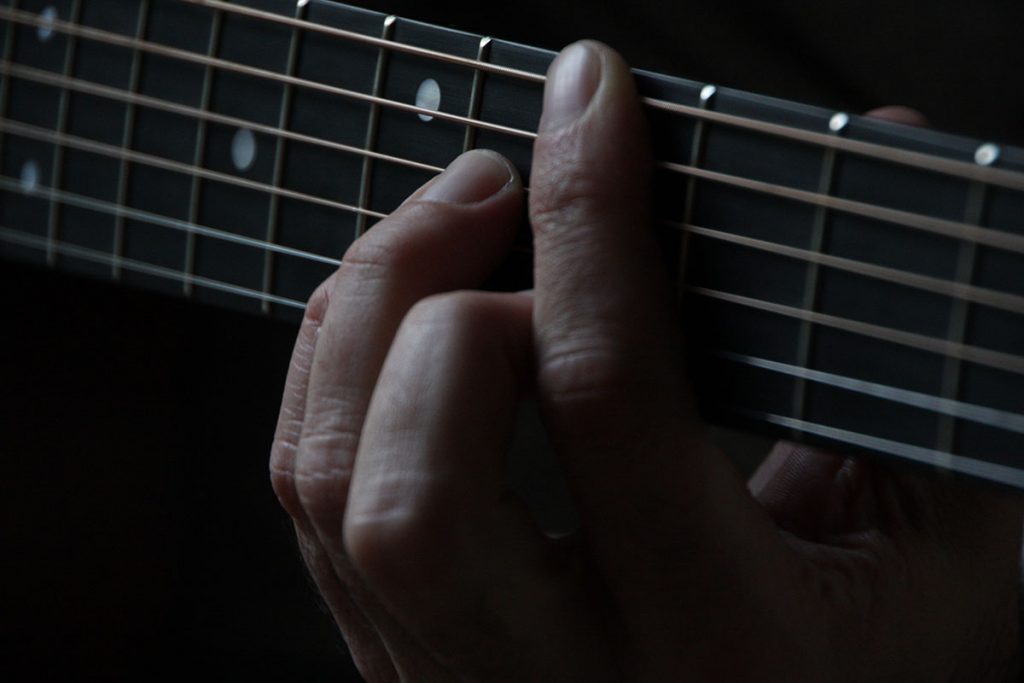Learning to play guitar sometimes means dealing with fingertip pain, at least until your hands adapt to the sensation of the strings and frets. After building up calluses, fingertip discomfort will be a thing of the past. Keep reading to learn several things you can do to get tougher fingertips and make time with your guitar more enjoyable.
Tip #1: Play Every Day
Taking guitar lessons once a week and rarely playing guitar outside of that isn’t sufficient for developing calluses. Get into the habit of playing for short bursts of time in several sessions per day, particularly by playing guitar chords. If you develop blisters, be especially careful not to overdo it because they can take an especially long time to heal and make playing extraordinarily difficult or impossible.
Tip #2: Get Your Guitar’s Action Adjusted
A guitar’s action refers to its string height in relation to the fretboard. If a guitar has high action, it means more finger strength is needed to press down on the string enough to get a clear sound. Lower action means the strings rest nearer to the fretboard, so you don’t have to press the string down as hard or as far to get a nice sound.
Adjusting your guitar’s action only takes a few minutes but is probably too hard to do if you’re just starting out. Take your instrument to the nearest music shop and ask someone there to adjust the action. That way, you can test out the results on the spot and continue getting things adjusted until everything feels right. If you’ve been playing your guitar with a very high action for a long time, or even as long as you’ve owned the instrument, you’ll probably be amazed at how much easier it is to play with the lower action, and you’ll especially appreciate the reduced effort for getting a beautiful sound.
Tip #3: Don’t Pick at Your Newly Developed Calluses
When calluses first form, they may feel so foreign you can hardly resist the urge to pick at them or even rip the skin completely off. However, it’s extremely important to just leave your calluses alone as they begin to form. Eventually, the parts of your fingers that touch the guitar strings will just feel thicker than other areas of your hands, but you’ll never get to that stage if you don’t let the calluses form naturally.
Tip #4: Evaluate the Way You Play
Some people don’t realize they’re pressing down on the strings too hard as they play guitar. Experiment by playing a chord and using your normal amount of pressure on the strings. Then, play it a second time. If you still get pleasant results while using less pressure, that’s a strong indicator you’re pressing down too hard, which may be causing fingertip pain.
Tip #5: Stick With It!
Gradually train yourself to use less pressure as needed, and ask your instructor to help coach you towards that goal during guitar lessons, if applicable. There’s no reason to let fingertip pain interfere with your desire to become a seasoned, confident guitarist. Put these tips into practice while practicing guitar and look forward to less discomfort!
If you’re just starting out on guitar, be sure to check out TrueFire’s Learning Paths and our free Learn Guitar 1 course for beginners. You’ll be building those calluses in no time!
